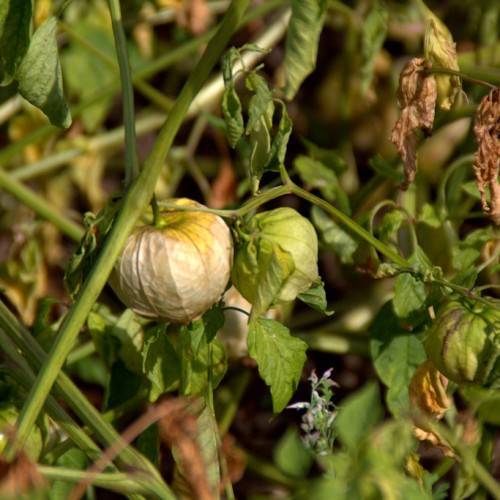
tomatillo
Physalis ixocarpa
Cycle:
Herbaceous Perennial
Watering:
Average
Hardiness Zone:
8 - 10
Flowers:
Flowers
Sun:
Full sun
Fruits:
Fruits Ready In Fall
Edible:
Yes
Leaf:
Yes
Growth Rate:
Low
Maintenance:
Low
Drought Tolerant:
Yes
Salt Tolerant:
Yes
Care Level:
Medium
watering
Tomatillos need moderate moisture and should be watered weekly. During hot weather, water every 3-4 days. Allow the soil to dry between waterings, and be careful not to overwater. Too much water will cause the fruits to split. When watering, it is important not to get water on the leaves/stems, as this can cause disease. Tomatillos prefer a soil with a pH of 6.0 - 7.0. If your soil is below 6.0, consider using compost to amend the soil.
sunlight
Tomatillo plants thrive when exposed to plenty of direct sunlight during the peak growing months of the year. The best amount of sunlight for tomatillo plants is about 8-10 hours of sunlight a day, on average. When first planted, tomatillo plants should be exposed to morning sun and then late afternoon sun to avoid the intense heat of midday. As temperatures warm up in late spring and summer, tomatillos should receive full sun exposure. If you do not have full sun available, tomatillos can still do well in partial shade, but you may see slower growth and lower yields in comparison to those grown in full sun.
pruning
Tomatillo plants (Physalis ixocarpa) should be pruned in mid-spring, shortly after the last frost. The goal for pruning tomatillo is to create an open-canopy structure that promotes air circulation and improved light penetration. To prune, cut away any old, woody stems including any suckers, which may grow near the base of the plant. Remove any branches that cross over the center of the plant, and any stems that appear to be dead or diseased. Additionally, if any branches are growing more than 48 inches above the ground, prune a section of the branch to cut it back and create a more manageable and accessible canopy. The goal is for the plant to have an open canopy with 1 or 2 primary branches, supported by several secondary branching stems that will bear fruit.
